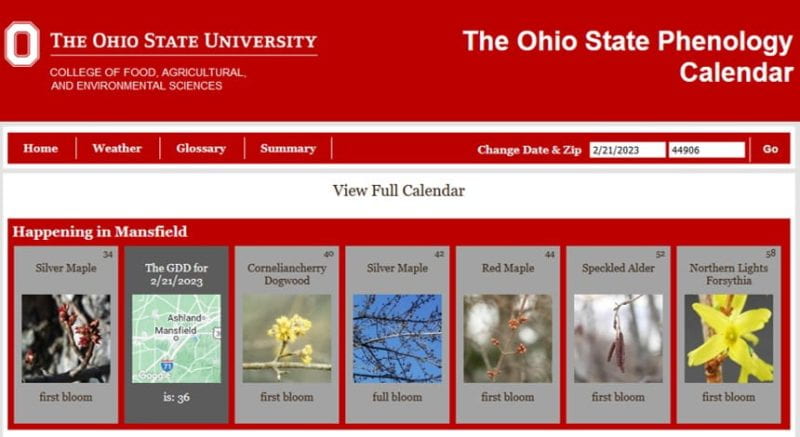Thanks to Les for his take on the 2024 maple season.
If you are an Ohio Maple Syrup Producer, how would you describe your 2024 maple season in one word? Early, different, weird, disappointing, average, surprising, long, short, exhausting, and the list goes on – perhaps even some words that cannot be printed here. Many local producers experienced the earliest start in the history of their sugarbush. This was followed by the earliest shutdown in the history of their sugarbush. Early tappers (NEW YEAR’S DAY!) were the fortunate ones, producing three quarters to a full season crop. There were some hardcore traditional sugarmakers that like to go by the calendar; it was a one run and done for them.
From a metrological viewpoint, this was as close to a record winter as you can get, and we are not talking about cold. The climatological Winter – December, January, and February – was the warmest since 1931. By month, December was the third warmest on record. January was close to average except for the lack of snowfall. You need melting snow to keep moisture in the ground, and sap flowing from the trees. February was one of the warmest on record. This was all predicted in NOAA’s three month forecast back in December 2023. If you are a maple producer, it was fairly clear. You were warned. Waiting until the first week of February to tap was not a good move, but it was better than waiting until President’s Day or when the Moon was right or because Grandpa always tapped that weekend. The middle of January saw the only extended cold period, but after that, it was game on. Those that tapped in early January were ready to harvest the big runs that came at the end of month and into February. This gave the early birds a running start at an average to above average season. The downside was low sugar content in the sap. Despite getting record volumes of early sap, the sap to syrup ratios were dismal. 50-60 to 1 ratios were common and widespread.
This is a very lighthearted overview of a very challenging year. On the positive side, producers made some very good syrup that did not have quality issues. Officials at the Geauga County Maple Festival Contest reported, “The overall grade color was darker than last year. Flavor was decent and was representative of the color. In a year like this with an abundance of warm weather, you would expect some off-flavor syrup to show up in the contest, but that was not case.” Thanks to adequate crop being produced in Northern New England, there will be no shortage of maple syrup for US markets.
When you have higher than average seasonal temperatures, it is far more likely that off flavors will appear. I have noticed that it is not uncommon to make Amber and even Golden syrup with an off flavor at the very end of the season. The off flavor is the product of sour sap, or possibly buddy sap. Most off-flavor issues are the result of warm weather leading to a massive buildup of microbes in the sap. An indication of this quality breakdown is rust colored niter in your filter press that is very hard to filter out. Ignored, conditions will go to slime and end up as ropy syrup. This is caused by bacteria in the families Bacillus and Micrococcus.
Now comes the real challenge! How do we prevent the possibility of this poor-quality product from entering the market in a year when a large percentage of producers may be facing a shortage of syrup for their customers? Do you bottle the syrup and hope no one notices? After all it may have good color. The rationale of the past was that most customers would not pick up on the off flavor. After all, they are used to high fructose corn syrup imitations. The answer is clear – never compromise the quality of the syrup you sell. Quality should always be the trademark of your maple operation.
In the end, what have we learn? We added one more year to the string of abnormally warm maple seasons that we have experienced over the last 5 years. Ohio producers need to be ready to tap earlier than they have in the past. If you are an experienced maple producer, you know when the time is right. This means that in 2025, when New Year’s Day rolls around, you may need to cut the party short and head to the woods. In fact, it is not a bad idea to be ready before Christmas. This is not a recommendation to tap in December, just an admonition to be ready.



















